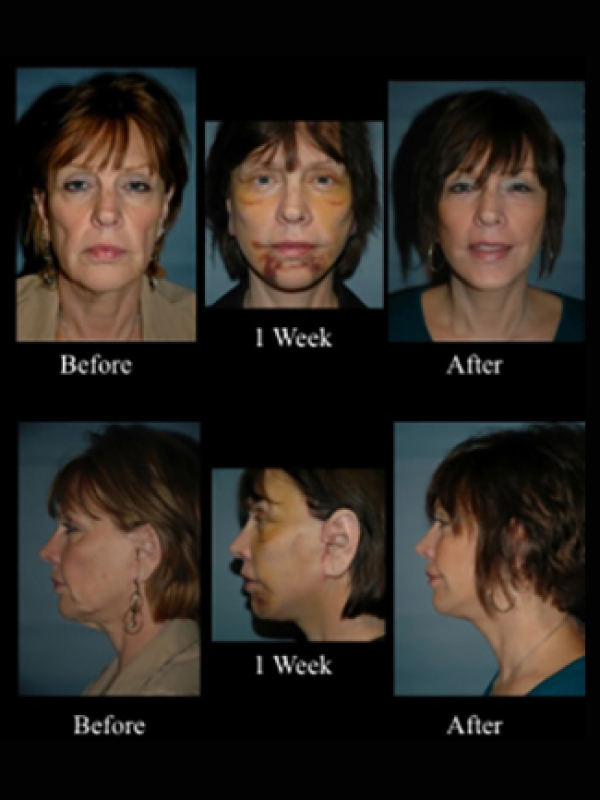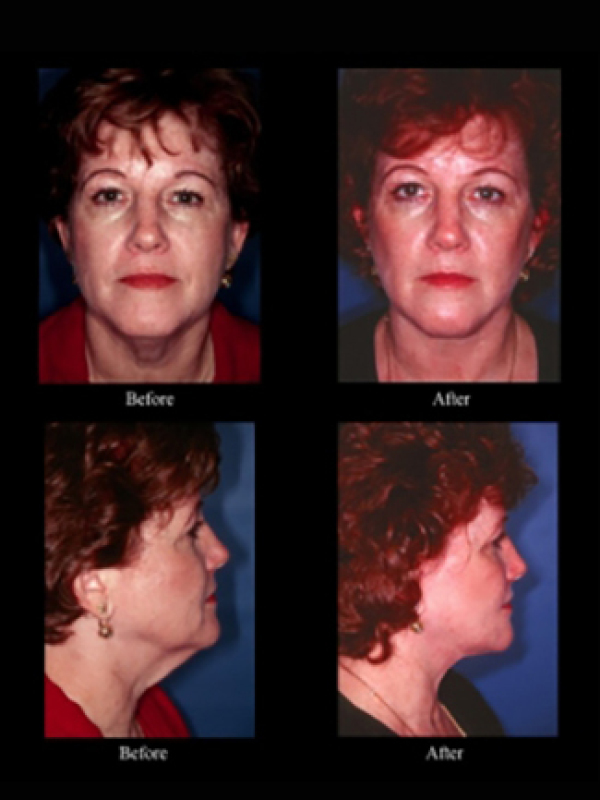Quick Links
What is a Facelift?
A facelift, also known as a rhytidectomy, is a procedure designed to address visible signs of aging on the face and neck. Common concerns treated with a facelift include deep lines and wrinkles, facial sagging, loss of muscle tone, and excess skin or fat. A facelift can provide a more refreshed appearance by repositioning and tightening underlying tissues and skin.
How Does a Facelift Work?
Facelifts work by lifting and tightening the deeper layers of the face to create a smoother, firmer facial contour. This procedure not only improves the appearance of the face but can also tighten the skin on the neck, addressing multiple signs of aging in one surgery. Unlike temporary solutions such as injectable fillers or Botox, a facelift provides longer-lasting results.
Before Your Facelift Procedure
Before your facelift, you will consult with Dr. Colony to discuss your goals and expectations, and he’ll provide a comprehensive plan tailored to your specific needs. Your medical history, current health status, and any medications or supplements you take will be reviewed to ensure you are a suitable candidate. Preoperative instructions may include avoiding certain medications, stopping smoking, and arranging for post-surgical support at home.
During Your Facelift Procedure
For your comfort, a facelift is performed under general anesthesia. Depending on the type of facelift you choose, incisions are carefully made along the hairline, around the ears, or under the chin. Dr. Colony will sculpt and reposition fat, tighten muscles, and remove excess skin. Many facelift patients opt to undergo additional treatments while they are under anesthesia such as Morpheus8 radiofrequency microneedling, and/or the injection of one’s own collagen into areas that could benefit from increased volume such as the lips, cheeks, or nasolabial folds.
After Your Facelift Procedure
After the procedure, you can expect some swelling, bruising, and discomfort, which are normal and temporary. You will be given detailed postoperative instructions to help manage your recovery, including how to care for your incisions and when to resume normal activities. Follow-up appointments will be scheduled to monitor your healing process.
Patient Testimonials
What to Expect for Your Facelift Results
The results of your facelift will gradually become visible as swelling and bruising subside. You can expect smoother, tighter skin and a more defined facial contour that looks natural and rejuvenated. While aging continues, the results of your facelift are long-lasting and can help you maintain a more youthful appearance for years to come. Maintenance treatments such as regular Botox and filler injections can help preserve facelift results even longer.
Frequently Asked Questions about Facelifts
FAQs
How do I prepare for a facelift?
Does a facelift make you look younger?
How long is recovery from a facelift?
How do you reduce swelling after a facelift?
How long does a facelift last?
What is the best age for a facelift?
Are there any risks associated with a facelift?
Will there be any visible scars with a facelift?
What should I avoid after facelift surgery?
Can a facelift be combined with other procedures?
Scheduling a Consultation
If you would like more information on getting a facelift in East Lansing, contact Michigan Plastic Surgery® to schedule your complimentary consultation with Dr. Lee H. Colony. Dr. Colony will work with you to create an individualized treatment plan to address your specific concerns in order to help you achieve your desired outcome. Call Michigan Plastic Surgery® to schedule your appointment today.
Request A ConsultationMeet Dr. Lee H. Colony, M.D., F.A.C.S., a renowned Board Certified plastic surgeon known for his expertise in aesthetic plastic surgery. As a respected national speaker and educator, his dedication to patient safety and involvement in esteemed medical societies highlight his exceptional skills.





